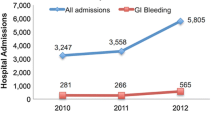Abstract
Bleeding and thrombotic events remain a significant cause of morbidity in pediatric patients supported with ventricular assist devices (VADs). The objective of this study is to identify the association between markers of anticoagulation and bleeding and thrombosis events during Berlin Heart ExCor support. A retrospective, single-center analysis of 9 patients supported with the Berlin Heart ExCor was performed. Inflammatory and anticoagulation parameters including C-reactive protein, fibrinogen, partial thromboplastin time (PTT), and platelet count were measured at 48 and 24 h before and after bleeding or thrombosis events. Patients served as their own controls, and the same parameters were measured during a control period where subjects did not experience either event. All patients received the anticoagulation regimen proposed by Berlin Heart. A total of 31 bleeding or thrombotic events were identified and matched to 18 control events. Patient with predominantly thrombotic events tended to weigh less than those with bleeding events (Δ7.7 kg, p < 0.001). PTT levels were higher before and after bleeding (Δ17.36, p = 0.002) and thrombosis (Δ8.75, p < 0.001) events relative to control. Heparin dose decreased after a thrombosis event (Δ−5.67, p = 0.097), and this decrease was significantly different from control (p = 0.032). Non-collinearity between heparin dose and PTT should prompt further inflammatory and hematological investigation. In addition, heavier patients were more prone to bleeding complications. The role of inflammation in the development of thrombus or hemorrhages in the pediatric VAD population needs to be studied further.



Similar content being viewed by others
References
Madriago E, Silberbach M (2010) Heart failure in infants and children. Pediatr Rev 31:4–12
Rossano JW, Dipchand AI, Edwards LB et al (2016) The registry of the International Society for Heart and Lung Transplantation: Nineteenth Pediatric Heart Transplantation Report—2016; focus theme: primary diagnostic indications for transplant. J Heart Lung Transplant 35:1185–1195
Blume ED, Naftel DC, Bastardi HJ et al (2006) Outcomes of children bridged to heart transplantation with ventricular assist devices: a multi-institutional study. Circulation 113:2313–2319
Ezon DS, Khan MS, Adachi I et al (2014) Pediatric ventricular assist device use as a bridge to transplantation does not affect long-term quality of life. J Thorac Cardiovasc Surg 147:1334–1343
Chen JM, Richmond ME, Charette K et al (2012) A decade of pediatric mechanical circulatory support before and after cardiac transplantation. J Thorac Cardiovasc Surg 143:344–351
Lin MH, Chou NK, Chen YS et al (2010) Outcome in children bridged and nonbridged to cardiac transplantation. Transplant Proc 42:916–919
Coskun O, Parsa A, Weitkemper H et al (2005) Heart transplantation in children after mechanical circulatory support: comparison of heart transplantation with ventricular assist devices and elective heart transplantation. ASAIO J 51:495–497
Zafar F, Castleberry C, Khan MS et al (2015) Pediatric heart transplant waiting list mortality in the era of ventricular assist devices. J Heart Lung Transplant 34:82–88
Adachi I, Khan MS, Guzmán-Pruneda FA et al (2015) Evolution and impact of ventricular assist device program on children awaiting heart transplantation. Ann Thorac Surg 99:635–640
van der Muelen MH, Dalinghaus M, Maat AP et al (2015) Mechanical circulatory support in the Dutch National Paediatric Heart Transplantation Programme. Eur J Cardiothorac Surg 48:910–916
VanderPluym CJ, Fynn-Thompson F, Blume ED (2014) Ventricular assist devices in children: progress with an orphan device application. Circulation 129:1530–1537
Fraser CD Jr, Jaquiss RD, Rosenthal DN et al (2012) Prospective trial of a pediatric ventricular assist device. N Engl J Med 367:532–541
Almond CS, Morales DL, Blackstone EH et al (2013) Berlin Heart EXCOR pediatric ventricular assist device for bridge to heart transplantation in US children. Circulation 127:1702–1711
Jordan LC, Ichord RN, Reinhartz O et al (2015) Neurological complications and outcomes in the Berlin Heart EXCOR® pediatric investigational device exemption trial. J Am Heart Assoc. doi:10.1161/JAHA.114.001429
Brix-Christensen V (2001) The systemic inflammatory response after cardiac surgery with cardiopulmonary bypass in children. Acta Anaesthesiol Scand 45:671–679
Byrnes JW, Prodhan P, Williams BA et al (2013) Incremental reduction in the incidence of stroke in children supported with the Berlin EXCOR ventricular assist device. Ann Thorac Surg 96:1727–1733
Dabbous MK, Sakr FR, Malaeb DN (2014) Anticoagulant therapy in pediatrics. J Basic Clin Pharm 5:27–33
Andrew M, Mitchell L, Vegh P, Ofosu F (1994) Thrombin regulation in children differs from adults in the absence and presence of heparin. Thromb Haemost 72:836–842
Allen KS, Sawheny E, Kinasewitz GT (2015) Anticoagulant modulation of inflammation in severe sepsis. World J Crit Care Med 4:105–115
Young E (2008) The anti-inflammatory effects of heparin and related compounds. Thromb Res 122:743–752
Levi M, Keller TT, van Gorp E, ten Cate H (2003) Infection and inflammation and the coagulation system. Cardiovasc Res 60:26–39
Aggarwal A, Gupta A, Kumar S et al (2012) Are blood stream infections associated with an increased risk of hemorrhagic stroke in patients with a left ventricular assist device? ASAIO J 58:509–513
Fan Y, Weng YG, Huebler M et al (2011) Predictors of in-hospital mortality in children after long-term ventricular assist device insertion. J Am Coll Cardiol 58:1183–1190
Yu X, Larsen B, Rutledge J et al (2012) The profile of the systemic inflammatory response in children undergoing ventricular assist device support. Interact Cardiovasc Thorac Surg 15:426–431
Acknowledgements
This work was supported by CTSI Grant UL1TR000124UCLA (Clinical and Translational Science Institute).
Author information
Authors and Affiliations
Corresponding author
Ethics declarations
Conflicts of interest
None declared.
Rights and permissions
About this article
Cite this article
Iyengar, A., Hung, M.L., Asanad, K. et al. Association Between Hematologic and Inflammatory Markers and 31 Thrombotic and Hemorrhagic Events in Berlin Heart Excor Patients. Pediatr Cardiol 38, 770–777 (2017). https://doi.org/10.1007/s00246-017-1578-9
Received:
Accepted:
Published:
Issue Date:
DOI: https://doi.org/10.1007/s00246-017-1578-9




